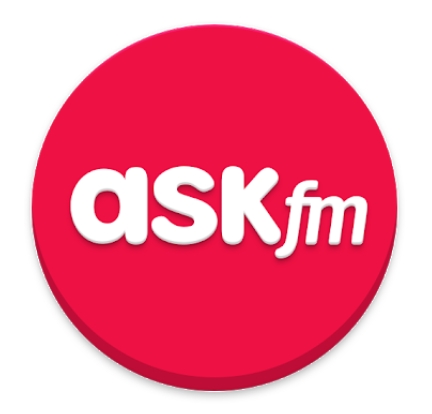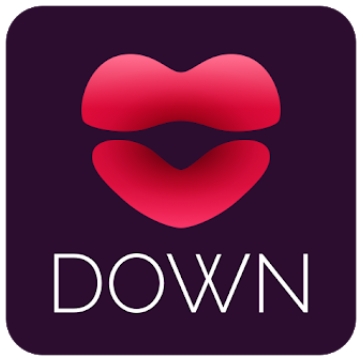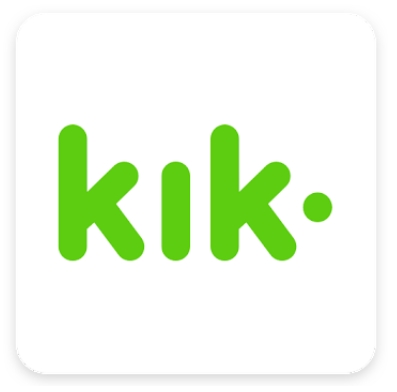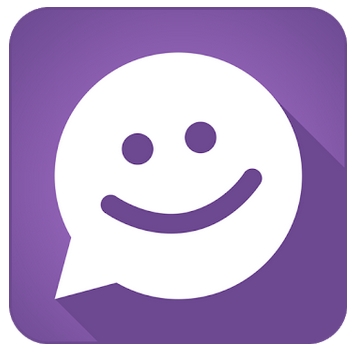Technology is pretty amazing.
A few weeks ago, on one of those increasingly rare days when our whole family was actually together, our college-age daughter spent the afternoon with us as we explored a few vintage stores and flea markets. On the way home, she was in the back seat, oblivious to the world as she typed on her phone. She finally stopped, pulled out her earbuds, and when I asked what she was doing, she told me she had finished an assignment for a class … and submitted it for grading. From the car. On her phone.
Hubby and I just glanced at each other and shook our heads.
The culture shock may not be as great for those who never stayed up all night typing a research paper on an electric typewriter and wouldn’t recognize the smell of Wite-Out®, but I suspect we’re all a little stunned at how things have changed in the dozen or so years since the iPhone first debuted.
Technology—and more specifically, mobile technology—is everywhere. We use phones for everything from grocery lists to plane tickets to taking pictures of our kids. We can’t imagine letting a teenager out of the driveway without one.
Last week, my friend Bridgitt shared a list of some great educational apps. The idea that this kind of enrichment could be at our fingertips was almost unthinkable a decade ago. But along with many positives of technology, there are some profound negatives. As parents, we need to be aware of the danger and temptation the digital world poses to our kids. While they live in our homes, it’s both our privilege and our responsibility to help them navigate ugly realities that technology brings right to our doorstep.
Recently, I’ve spent a good chunk of time researching popular apps, and while this list is by no means exhaustive, here are several that are potentially dangerous for young people. It’s a good idea to familiarize yourselves with these (and watch out for others that may take their place). But most of all, use your judgment, your intimate knowledge of your own child’s heart and maturity level, and a whole lot of prayer as you decide what’s right for your own kids.
 Ask.FM (iOS or Android)
Ask.FM (iOS or Android)
Ask.FM bills itself as a Q&A platform. Users can anonymously ask and answer questions of any type.
Guidelines state that no one under 13 can register for an account, but (as is often true) there are no safeguards to prevent younger kids from using a fictitious birth date.
With no real filters and no “off-limit” topics, kids are likely to encounter a lot of inappropriate content. Violence, sexuality, profanity … you’ll find it all on Ask.FM. The app also has a reputation for bullying and generally hateful behavior. (Think The Lord of the Flies, just in app form.)
Bottom line, you probably don’t want your kid hanging out in this virtual neighborhood.
Similar apps: Lipsi, Sarahah, Tellonym, Quora
Calculator%, Calculator+, Calculator#, and similar apps (iPhone or Android)
In addition to having a functioning calculator, these are “vault apps“ that hide private files until a pre-set equation or access code is entered into the calculator. There are a many of these available now—simply search for “calculator vault” and you’ll find a whole list of possibilities! They can be found in both the Apple and Google app stores, and many are free to download.
If you notice that your child has downloaded a new calculator app, get the name (and if possible, the developer since many names are so similar), make note of the specific icon used, and check the app store to be sure it’s not a vault. If you do find your child has one of these on her phone, there’s an excellent chance she’s trying to hide photos, questionable apps, or other content from you.
 Down (iOS and Android)
Down (iOS and Android)
“The secret way to get down with people nearby.” That’s how this app describes itself, and I really can’t describe how frightening it is to me as a parent. The developer describes how the app works in three steps: “1. Get the DOWN app; 2. Select sexy people. 3. Get dates or get down!”
App users scroll through photos and profiles of others who are geographically close to them. When they express an interest in another user’s profile—tagging them with one of two choices, “Get Down” or “Get Date”—nothing happens until/unless that person also tags them as a desired match. When two users select each other’s profiles, Down lets both of them know they’ve tagged one another.
Down is another app that is intended for ages 17+ but teens know how to get around that obstacle. After all, according to the developers, “Life is too short. Go out there, live and find fwb!”
Needless to say, if you find this app on your teen’s phone, it’s time for a talk.
Similar apps: Happn, CasualX, Pure, Feeld, FriendFinder-X, Grindr, Blendr, Tinder
 Holla (iOS or Android)
Holla (iOS or Android)
Holla is a live, anonymous video-chat app.
Wow. So much wrong with that sentence, when you’re talking about kids.
Essentially, users see photos of others all over the world. (The app claims more than 10 million users worldwide.) Then, based on the photo, you “swipe” the person who piques your interest, and you’re connected to them on a video chat.
Holla claims not to tolerate offensive or adult content, and is considered a 17+ app in both the Google Play and Apple stores.
Similar apps: Omegle (iOS & web only), Chatous, Monkey, RandoChat
 Instagram (web, iOS, Android)
Instagram (web, iOS, Android)
Everyone knows Instagram. You probably have it on your phone, and might not think twice if your child wants to install it on his. More than 70% of tweens and teens use the platform regularly.
But parents need to know that Instagram’s “disappearing message” feature offers the ability to send photos and videos that can only be viewed briefly (much like Snapchat). In addition, lots of kids use Instagram direct messages instead of a texting app—and even if your child’s Instagram profile is private, they can use this function with anyone. If you’re checking their texting app but not bothering to look for DMs on Instagram, you might be missing a lot.
Because Instagram is so widespread in among teenagers, there has been growing concern about cyber bullying on the platform, either through public comments on photos or through direct messages. See this article in The Atlantic for more details.
Be aware, too, that it’s not uncommon for kids to create a fake Instagram account (known as a “finsta”) that’s public, and to set up a second account they consider the real (“rinsta”) one that only selected people can see. You’ll need access to your child’s phone and Instagram app to know if he’s juggling more than one account; Instagram allows this and even makes if fairly simple to switch between the different accounts. Having more than one account doesn’t mean your child is doing anything nefarious—is it too ironic to say, “Sometimes we all want some privacy” in relation to social media?—but it’s good to know what’s going on.
Similar apps: Retrica, Hipstamatic, Flickr, Imgur, Tumblr
 Kik (web, iOS or Android)
Kik (web, iOS or Android)
Kik is a hugely popular, free direct messaging app that’s used by more than 300 million people worldwide, MANY of whom are under age 18. Using it, they can chat with strangers and send them photos and video.
It’s anonymous … no phone number is required to sign up, just pick a username and go. This app is regularly featured on lists of most dangerous apps for teens, and occasionally in the news (e.g., the heartbreaking story of a 13-year-old girl murdered by a college student she met on Kik, this DOJ press release about a sex offender sentenced to 30 years for exchanging child pornography through the platform, and the fact that it was former U.S. Rep. Anthony Weiner’s choice when sexting a 15-year-old). The internet is FULL of warnings about sexual predators on Kik.
For an app that is largely targeted to kids, the developers seem to have gone out of their way to make it difficult for parents to see what their child is doing. There are essentially no parental controls. Perhaps more importantly, a user’s chat history is cleared any time he logs out of his account OR logs in from a different device. So, if you log in with your child’s username (even if you have his password!) from your own phone, you’re effectively deleting their Kik chat history by doing so.
Similar apps: WhatsApp, Tango, Viber, Facebook Messenger
 MeetMe (web, iOS or Android)
MeetMe (web, iOS or Android)
This app currently boasts several hundred million users worldwide. Unlike some of the others on this list, MeetMe emphasizes meeting friends online (at least, in their marketing) and claims the app focuses on introducing users to new people.
Users can purchase in-app credits, or complete certain tasks (such as logging in frequently, interacting with others, looking at lots of profiles) to earn them. For kids growing up with Instagram and YouTube influencers, the idea of earning some type of capital for their actions can be very appealing. The credits give them a higher profile on the app, exposing them to an increasingly large group of strangers and unlocking the ability to use special features like search tools based on age, gender, location, relationship status, and even body type.
There is little to no age verification in the app, so there’s nothing preventing much older users from contacting and chatting with a teenager. Some might falsify their age; others don’t bother, instead offering attention, friendship, and a sympathetic ear. Following the typical pattern of sexual predators, they often spend months or even years grooming a vulnerable teenager to trust them, sometimes with terrible results (see this story, for example).
Judge for yourself whether chatting with strangers is an appropriate outlet for your child, but do supervise this particular app very closely. It’s a repeat offender on “dangerous app” lists, and for very good reason.
Similar apps: Badoo, Chatous, Happn, OKCupid, Blendr
 Snapchat (iOS or Android)
Snapchat (iOS or Android)
When it comes to parents being warned about apps, Snapchat may be the first thing that comes to your mind … and it’s still going strong. To give you a sense of the scale of this app’s use, it has more than 19 million reviews on the Apple app store and has been installed more than 500 million times.
If you need a refresher, Snapchat is messaging app used to share photos, videos, text, even drawings. The distinctive feature is that once a message is opened, the content disappears from the recipient’s phone in a matter of seconds. In theory.
The problem with Snapchat—other than the fact that just about every person who owns a smartphone knows how to take a screenshot, so you can assume nothing really “disappears”—is basically the affliction of the internet as a whole. Anonymity, even the illusion of it, will often prompt people to say and do things they would never consider in face-to-face interactions. Lack of accountability can be pretty insidious.
While it may not be the end of the world if an older teen wants to Snapchat with a friend, it’s definitely not appropriate for younger children … and you’ll want to have a good sense of just who is messaging your kids, regardless of age. Use your judgment and your knowledge of your own child to decide about this one.
Similar apps: Cyberdust, Instagram (Disappearing Messages), Wickr Me
 TikTok (formerly Musical.ly) (iOS or Android)
TikTok (formerly Musical.ly) (iOS or Android)
There’s no debating that this self-described “raw, real, and without boundaries” video app, which allows users to create short videos and share them with a worldwide audience, is wildly popular. It has been #1 on Apple’s list of most downloaded apps for more than a year.
Guidelines state that no one under 13 is permitted to have an account or post videos, but enforcing this is difficult. More importantly, simply downloading the app allows you to view videos, without creating an account.
To react to videos or post your own requires setting up an account using an email address, phone number, or an existing Google, Facebook, Twitter or Instagram account. After registration, accounts are set to “public” by default and videos are visible to all users who have not specifically been blocked from viewing them.
Accounts can be made private, but doing so means that no one else can view videos without the creator’s permission; many kids won’t choose this setting (or will change it if a parent does) because they want the validation of others reacting and commenting on their videos. Even with a private account, the user profile (including photo, username, and bio) can be viewed by everyone else on the app.
According to the terms of service, users may not post content that is “defamatory of any person, obscene, offensive, pornographic, hateful or inflammatory,” but the company’s definition of these things may be—probably is!—quite different from a parent’s. Filters on the app are notoriously unreliable, and many parents report seeing sexually suggestive and/or explicit content, as well as lots of inappropriate language, on a supposedly restricted account.
Similar apps: Lasso, Boomerang, Dubsmash
 Tinder (web, iOS, Android)
Tinder (web, iOS, Android)
First, the good news: while Tinder once had a reputation for being exclusively a “hook-up” app, that’s no longer the case. These days, many Tinder users are seeking a compatible match for dating, and they’re able to specify up front that they are NOT looking for a no-strings fling. (So, when someone proudly proclaims that they met their fiancé on Tinder, you don’t have to be floored that they’d say it publicly. Not that this recently happened to anyone I know, of course.)
Having said all that, Tinder is still very much a platform for people seeking a partner, regardless of whether that means a casual hook-up or a walk down the aisle. For obvious reasons, you may not want your teenager using this app.
The Google Play store rates this app as “Mature 17+” and if a user discloses an age under 18 years, he will be blocked from setting up a profile with the same identifying information (email address, phone number, or Facebook profile) until he turns 18. This information appears in the app’s terms and is widely available online, however, so a savvy teen who wants to sign up will often give a fake birth date.
Similar apps: Skout, Badoo, OK Cupid, Blendr, Grindr
 Whisper (iOS or Android)
Whisper (iOS or Android)
Here’s another anonymous app with 30+ million users worldwide. Terms of use specify that you must be 13 years or older to use the app, and “if you are between 13 and 18 years of age, you may only use the Services under the supervision of a parent or legal guardian.”
With this app, you connect with a group of strangers based on your interests and/or location. With location turned on, the “nearby” designation lets you see posts from people in your area. Within the groups, users confess secrets they wouldn’t tell anyone else (thus the app’s name) or ask for advice, with messages that are usually superimposed on a photo or graphic.
As a parent, I’m not excited about that kind of “anonymous.” At all.
There’s a LOT of content that parents are going to be concerned about children seeing, including explicit language, talk about drugs or alcohol, and harsh feedback from others. Recent reviews of the app (from current users) are full of complaints about the comments they receive and constant requests to exchange photo/video—often specifically requesting nude images—and personal information. Whisper is definitely not an app that’s appropriate for minor children.
Similar apps: AfterSchool, Psst, Omegle (web & iOS only), Happn, Chatous
 Yubo (formerly Yellow). (iOS or Android)
Yubo (formerly Yellow). (iOS or Android)
Yubo markets itself as a “social discovery app.” Not sure what that means? Well, it’s often called “Tinder for teens” and the resemblance is striking. Just like Tinder, Yubo shows users photos of others on the app, and they swipe left or right on the image after viewing it. When two users are matched, the app connects them, at which point they can chat or exchange photos and videos.
You do have to use a phone number to sign up, and respond to a verification text message. But while the developers say the app is not intended for anyone younger than 13 (and anyone over 18, although allowed to join, is supposedly barred from contacting underage users), once again there is no verification process to ensure anyone gives their actual age. A 10-or-12-year-old could easily pretend to be a teen. A 14-year-old could pose as an adult. And likewise, adults could sign up and be matched with a teenager simply by giving a false age. Users are grouped by age, simply as minors or adults.
Any time a Yubo user live streams video, anyone in their age group can see it … not just their friends (those they’ve “matched” by swiping, or added during previous video streaming). As they are streaming, they have the option to add any new viewers as friends. Yubo actively encourages them to make connections with others on the app, and makes it very easy to do so. Once two people are friends, they can send direct messages to chat privately.
Similar apps: Badoo, Skout, Azar, Chatous
Whatever apps your children are allowed to use, when they reach the age where they have their own devices, you must insist on having access to them and (at least occasionally) use that access. Although they’ve grown up with social media, many kids simply don’t see the dangers until it’s too late. And while we cannot live our lives in fear, we parents must also do what we can to protect them—their physical safety, their hearts, their innocence—while they are still at home with us.
God grant us wisdom to do it, and grace when we make mistakes along the way.
Was this post helpful?
Please share it with friends … and
subscribe to A Reason For Homeschool today!

W-O-W, that’s a lot of good information. Thank you!
Thanks, Bridgitt. It’s scary stuff, for sure!
This is so helpful! Thank you!
It’s hard to keep up, but so important that we know what our kids are doing with technology. Thank you for letting us know you found it helpful, Kelly!
Thanks I am a mother and very busy! This helped me alot!